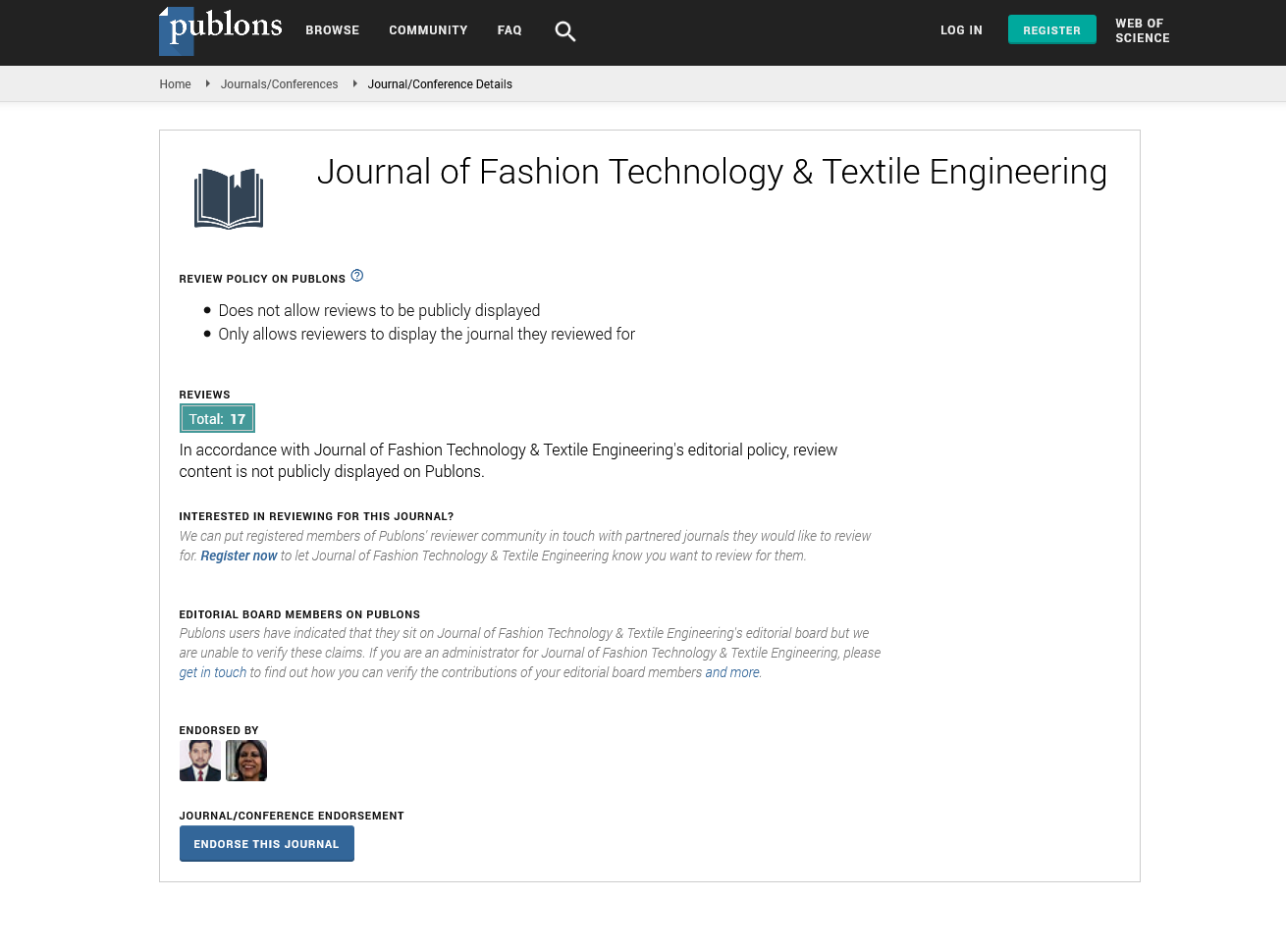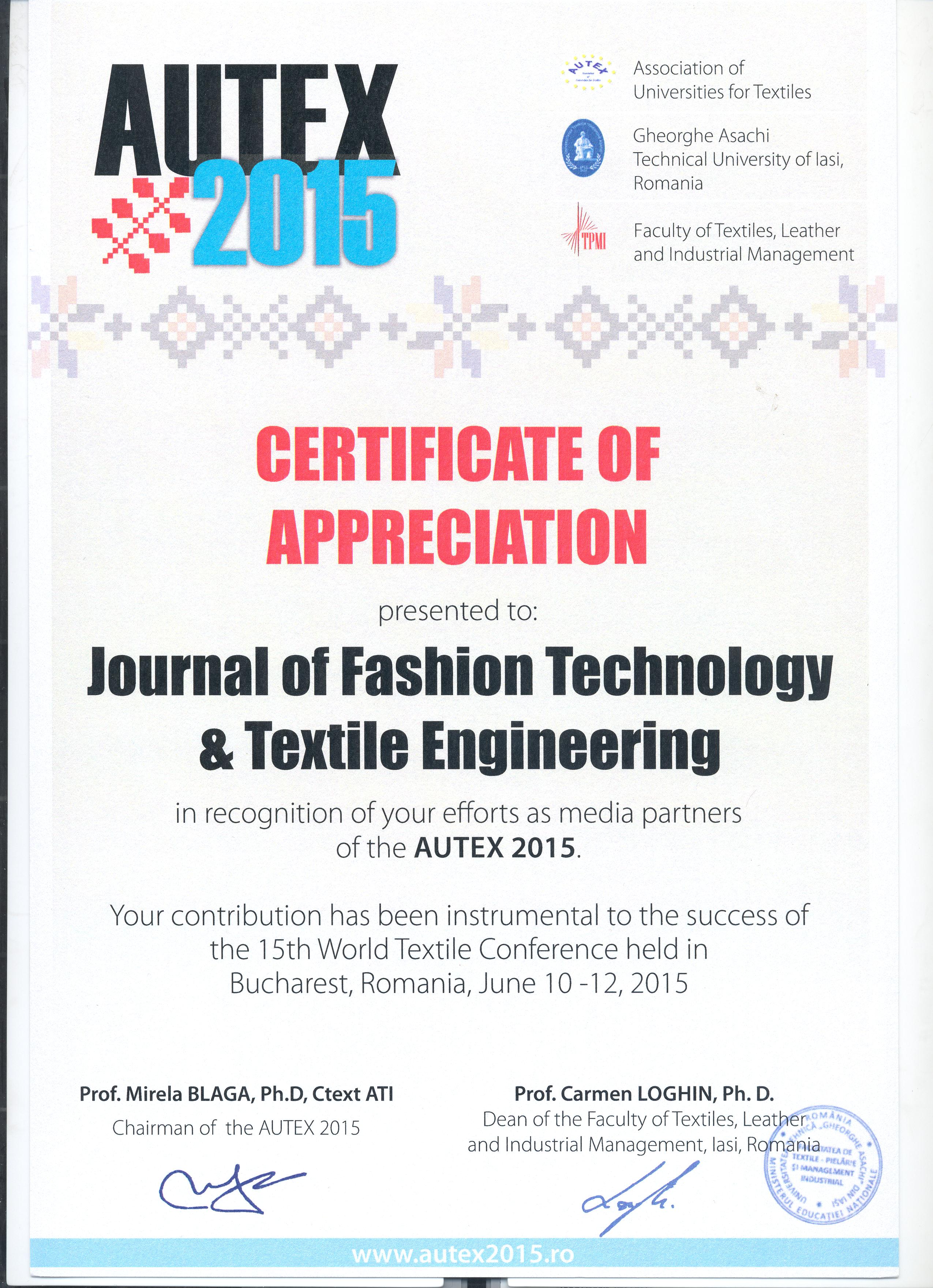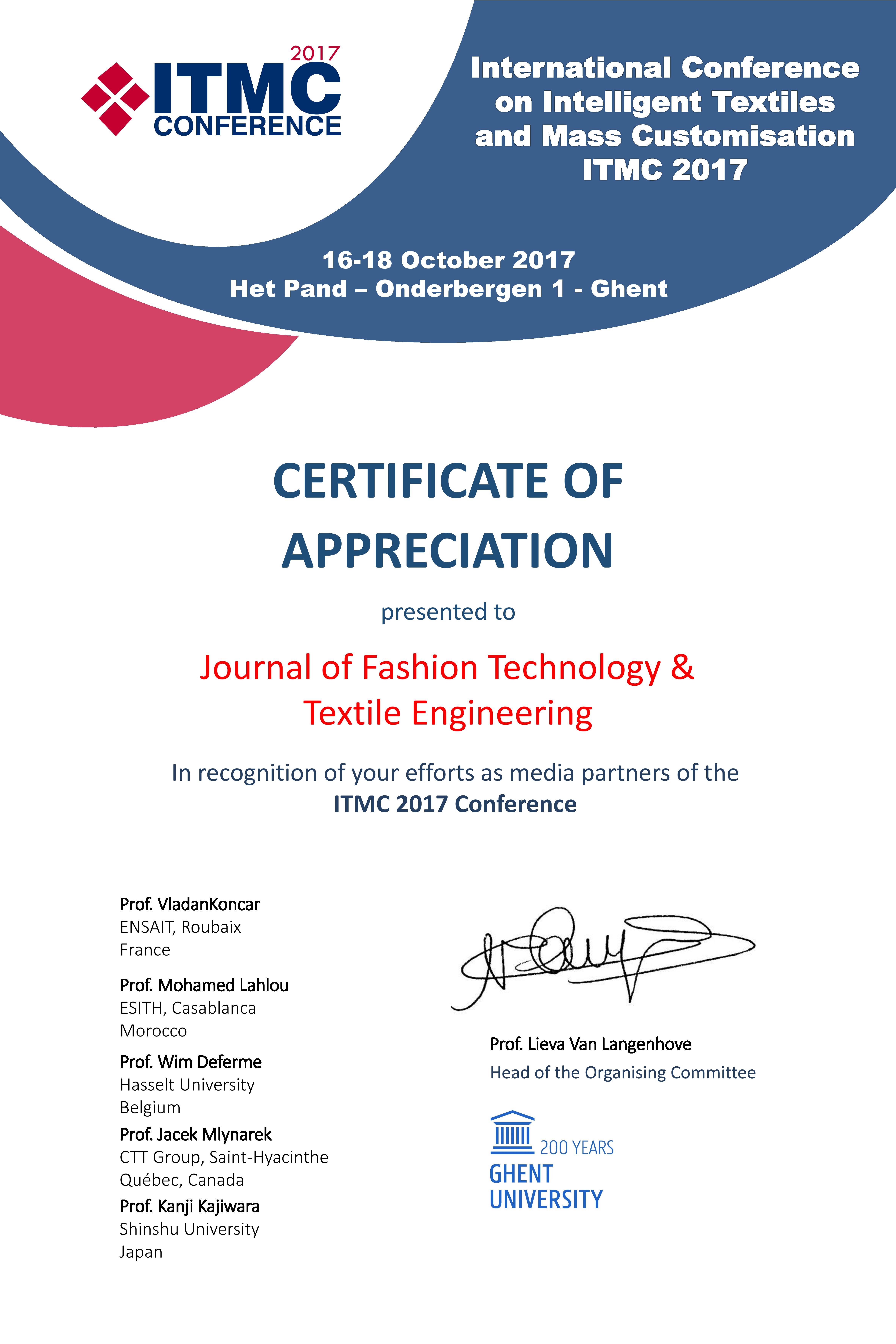Opinion Article, J Fashion Technol Textile Vol: 12 Issue: 6
Advancements in Fabric Design Techniques and their Influence on Fashion Craftsmanship
Biayia Samia*
1Department of Fashion Studies, London College of Fashion, London, United Kingdom
*Corresponding Author: Biayia Samia,
Department of Fashion Studies, London
College of Fashion, London, United Kingdom
E-mail: bai.yia_samia@gmail.com
Received date: 26 November, 2024, Manuscript No. JFTTE-24-155263;
Editor assigned date: 28 November, 2024, PreQC No. JFTTE-24-155263 (PQ);
Reviewed date: 12 December, 2024, QC No. JFTTE-24-155263;
Revised date: 20 December, 2024, Manuscript No. JFTTE-24-155263 (R);
Published date: 27 December, 2024, DOI: 10.4172/2329-9568.1000385.
Citation: Samia B (2024) Advancements in Fabric Design Techniques and their Influence on Fashion Craftsmanship. J Fashion Technol Textile 12:6.
Description
Craftsmanship and fabric design are essential elements that define the quality and uniqueness of fashion garments. The fashion industry has changed over the centuries with the integration of advanced techniques and new materials, but the importance of craftsmanship and fabric design remains same. These features not only impact the artistic appearance of clothing but also influence its functionality and longevity. In an era dominated by mass production and fast fashion the part of skilled artisans in crafting high-quality fabrics has become even more significant. Craftsmanship is the ability to work with various materials with skill and attention to detail to produce garments that are not only visually appealing but also durable and comfortable. Skilled artisans work traditional and modern techniques to operate fabric, adding complex patterns, textures and finishes that make each piece of clothing unique. Whether it is hand-weaving silk embroidery or dyeing fabric with natural pigments, the process requires an accepting of the materials and techniques used. In high-end fashion houses, artisans play a vital role in designing and producing fabrics that stand out in terms of design and quality.
Fabric design is an art form that reflects the originality and technical capability of designers. From the initial concept to the final garment, fabric design involves careful consideration of texture, color, weight and durability. Fashion designers often experiment with various fabric treatments and finishes to add complexity and interest to their collections. For example, fabric can be treated to achieve different effects such as pleating, quilting, or embroidery, which enhances the overall aesthetic of the garment. Additionally, the choice of fabric influences the structure and drape of the garment, which can drastically change the shape and fit.
In addition to traditional fabric design techniques, advancements in textile technology have introduced new possibilities in fabric handling. Modern techniques such as digital printing, laser cutting and 3D knitting allow for the making of innovative fabrics with complex patterns and textures that were once impossible to achieve. These technologies enable designers to push the boundaries of fabric design while maintaining the artistry and craftsmanship at the core of fashion. Despite the advancements in technology, the skill of the artisan remains vital in ensuring that these designs are finished to perfection, blending traditional craftsmanship with modern innovation. The craftsmanship involved in working with sustainable fabrics requires expertise to ensure that the materials retain their integrity and artistic appearance. Moreover, the use of eco-friendly dyes and treatments is gaining popularity as part of the movement towards reducing the carbon footprint of fashion production.
In high-fashion design collections, the part of craftsmanship and fabric design is often highlighted through elaborate techniques such as beading, hand-embroidery and lacework. These processes are timeconsuming and require a great deal of patience and precision. Beading and embroidery are applied by hand to fabrics, often taking hours or even days to complete. This level of craftsmanship transforms ordinary fabrics into works of art that are meant to be damaged on special occasions or displayed in museums. The attention to detail and artistry involved in these processes elevate the garment beyond its functional purpose, making it a statement of originality and craftsmanship.
Conclusion
In conclusion, craftsmanship and fabric design are integral to the fashion industry, shaping the way garments are perceived and damaged. Skilled artisans and designers work determinedly to produce fabrics that are not only beautiful but also functional, sustainable and durable. As fashion continues to change, the combination of traditional techniques and modern innovations will last to change fabric design and craftsmanship, ensuring that fashion remains a unique art form that recognizes originality, quality and sustainability. Fabric design and craftsmanship are not only important in luxury fashion but also in ready-to-wear collections. Designers work closely with textile manufacturers to ensure that the fabrics used in their collections meet specific standards of quality, texture and durability. By focusing on the quality of the fabric, designers are able to provide garments that are both functional and stylish. In today’s fashion market, consumers are becoming more aware of the importance of quality materials and craftsmanship in the clothing they purchase, often prioritizing well-made garments over mass-produced items.
 Spanish
Spanish  Chinese
Chinese  Russian
Russian  German
German  French
French  Japanese
Japanese  Portuguese
Portuguese  Hindi
Hindi 


